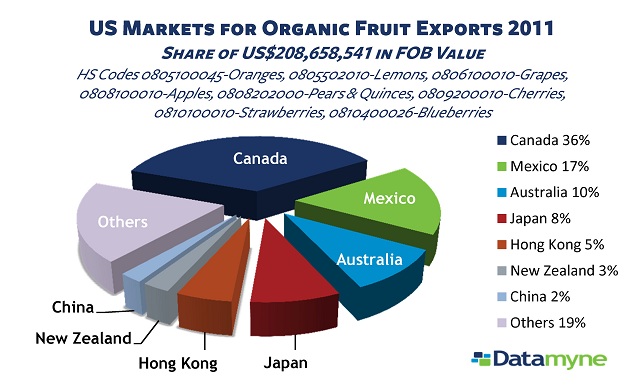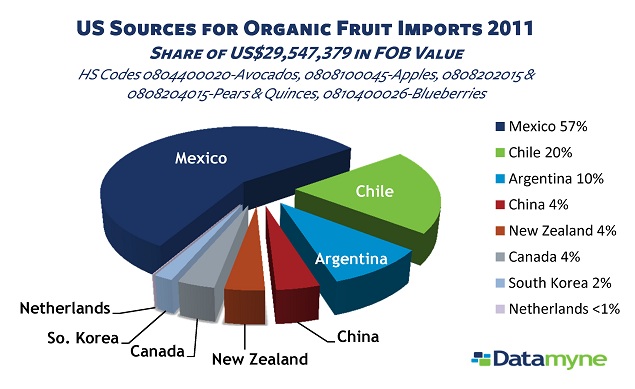Each recognizes the other’s certification, opens market to imports
The US and European Commission have reached an agreement that, in recognizing the equivalence of their organic certification programs, will open their markets to each other’s organic products effective June 1, 2012.
Under the new partnership, the EU will recognize the US Department of Agriculture National Organic Program (NOP) as equivalent to the EU Organic Program, clearing the way to sell the products under the organic label in both markets, under two conditions: Tetracycline and streptomycin were not used to control fire blight in apples and pears (for US exports to the EU); and antibiotics were not administered to animals (for EU exports to the US). [More details here.]
Together, the US and EU organic markets are valued at more than $50 billion. According to the USDA, more than two-thirds of US consumers buy organic products at least occasionally, and 28% buy organic products weekly.
We’ve written before about the growing trade in organic products – a trend that will be easier to track with the introduction of Harmonized System (HS) 2012, which for the first time provides codes to identify separately fruits, vegetables, coffee, and grains (under headings 0709, 0804, 0808, 0810, 0901, 0902, and 1201) that are “Certified Organic.” [See By the Numbers.]
The International Trade Commission (ITC) adopted these codes a year earlier with the 2011 edition of the 10-digit Harmonized Tariff System of the US (HTSUS). [See the complete list of organic codes here.]
Here are the top US markets for exports of its organic fruit and all the sources for US imports of organic fruit, based on the first full year of data collected for the new, certified organic HTS codes:





